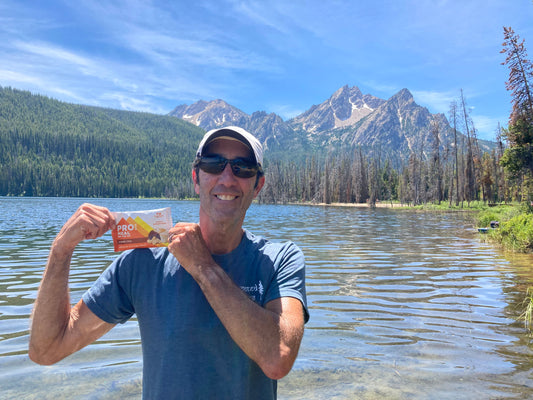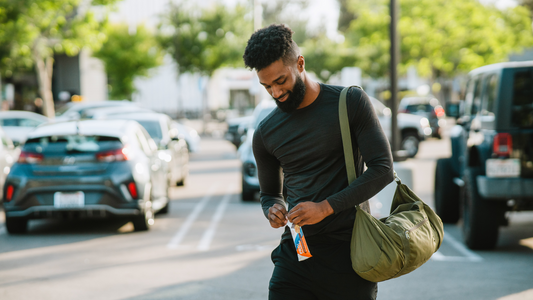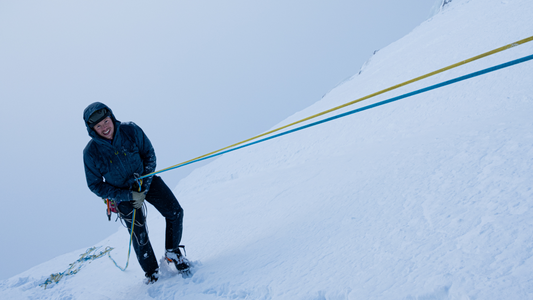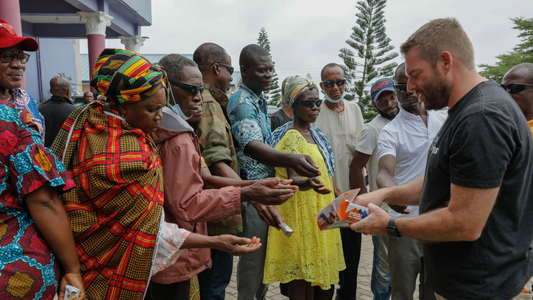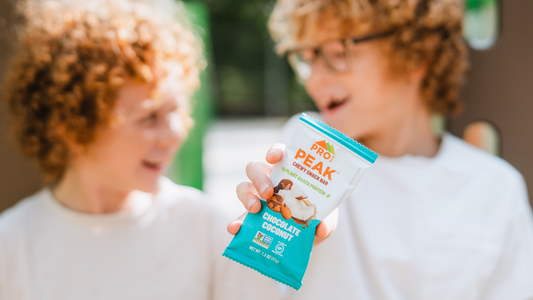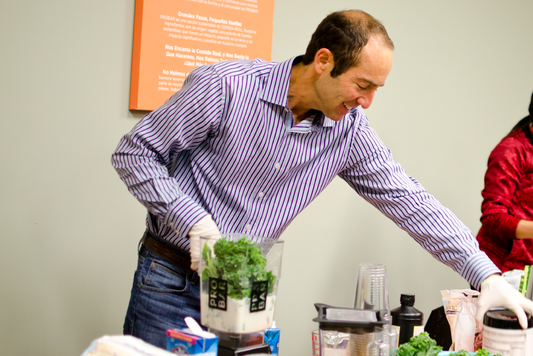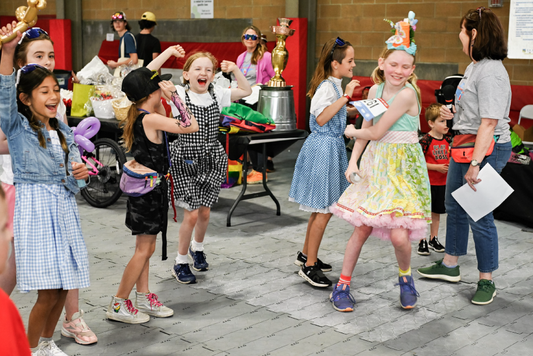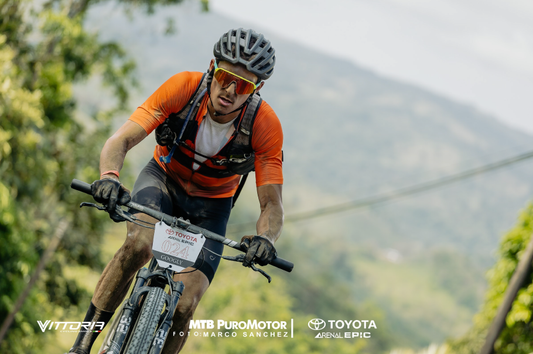Carly Moree was the first woman to attempt the men's unsupported record on the 223-mile Nüümü Poyo/John Muir Trail. She is the Owner & Founder of Rocky Mountain Hiking Company, offering guided hikes and backpacking trips in Colorado and California.
Carly is the co-author of the popular thru-hiking book "Pacific Crest Trials" and has hiked and run thousands of miles on trails, including the Grand Canyon rim to rim to rim, both the Pacific Crest Trail and Appalachian Trail, and the Tahoe Rim Trail. She is an outdoor consultant, author, hiking guide, and endurance athlete. Carly can (mostly) be found living in Golden, Colorado.
Here are a few tips from Carly on how she handles Fear out on the trail:
"My fear on trails when I’m hiking and running solo is one of my strongest assets. Let me explain. I used to think any and all fears related to my outdoor adventures were something I needed to overcome. When someone asked how my solo backpacking trip went, I wanted to tell them I slept peacefully under the stars - Rather than the reality which was I slept with one eye open convinced an animal would pounce on my tent. When I got back from a Saturday afternoon run, I wanted to tell friends it was 'totally chill,' instead of saying I kept looking over my shoulder every ten seconds.
I wanted to be fearless.
I thought being fearless in the outdoors meant I could then fully enjoy being outside. That if I could just get rid of those nagging little fears in my brain, I could enjoy the outdoors how I thought it was meant to be enjoyed: Unafraid. So I tried very hard to push my thoughts away whenever they popped up while I wrestled my sleeping bag into my hiking pack or stuffed MEAL bars into my running vest. This would have worked perfectly, except for the fact that I kept getting hung up on one thing - What if I do believe there are things to be afraid of in the outdoors?
Does that mean I shouldn't go?
Because lemme tell ya, it takes a heck of a lot of energy to try and convince yourself there’s nothing to be afraid of on trail when you know full well there is plenty. That question of, does that mean I shouldn't go? This one I have chewed on for years, more so than any number of BOLT's I've consumed.
Thousands of miles of hiking and running on dirt paths, mostly solo, have landed me on this answer: Being fearless in my outdoor pursuits is quite frankly, dangerous. I want to bring my fear with me. I want to still go and have a great time, despite having fear.

Here’s what I’ve learned about having fear on trail (especially solo), which has been a total game-changer for me:
Fear Doesn’t Go Away With Experience. It Shifts.
Last year I attempted a 223-mile hike/run on the Nüümü Poyo (John Muir Trail) in 3 days, which just happened to be the men’s Fastest Known Time. While the attempt didn’t go exactly as planned, one thing did: I was f****** scared.
When I stood at the base of Mt. Whitney at the start of the 72-hour attempt, I was scared of severe altitude issues such as HAPE and HACE. When I descended down the endless rocks of Glen Pass in the dark around mile 40-ish, I was afraid of rolling an ankle. Or both. Entering into woods around 12 am alone felt as if I were walking into a mountain lion’s den, which was utterly terrifying. When I started hearing voices at mile 60 going up Pinchot, I wanted to pee my pants. And I did, eventually (twice). By mile 110 I didn’t have fear but only because I was too exhausted to care anymore.

It’s not like the Nüümü Poyo was my first ever big attempt on a trail. I had already thru-hiked a couple of them, I’d covered 40+ miles per day for almost three weeks in the Washington and Oregon sections of the Pacific Crest Trail, and I’d run an out-and-back of the Grand Canyon. Despite all this experience, I still had fears. The difference was I now understood that it was healthy to be afraid and that it made complete sense. That there was no point in trying to push that fear away, because it was there for a reason (hint: because wandering alone in the middle of the night in the Sierra Nevada Mountains is scary AF!)

So when that question came up during all my training for the Nüümü Poyo, does that mean I shouldn’t go? I already understood something very key about fear: It shifts. My fears on the Appalachian Trail in 2013 involved being terrified of bears, camping alone, and asking for help setting up my tent.
But over time that fear changed. I became less preoccupied with the thought of seeing bears on the trail and more concerned about hypothermia (because seeing 500 bears and getting rained on every day for 5 months will do that to you). After a hairy encounter with some dogs on the Pacific Crest Trail, I became very afraid of dogs that are off-leash, a fear I face every day in Colorado. After the Grand Canyon run, I became fearful of all things Grand Canyon.
The more miles I gathered under my feet with each of these adventures, the more I noticed new fears coming up.
So Where Does That Leave Me? Prepared and Empowered
Having fear doesn’t mean I go into these attempts totally unprepared. Quite the opposite! Fear helps me determine where to put my attention and how to prep so that I can have a safe, enjoyable (type-2 fun) experience. After all, it’s not like I want fear to completely take over my experience. So I get prepared by taking action. What action, you ask? I gather data. I ask questions. I talk with people who have pursued similar attempts in the outdoors. For example, I watch virtual presentations on lightning awareness, figure out who gave that presentation, track them down on the internet, get their phone number and email, and eventually, connect with them so I can ask for further information. That type of action.
I educated myself on the symptoms to look out for in terms of HAPE and HACE before starting the Nüümü Poyo. I talked with doctors. I brought a Garmin inReach. I trained for 8 months. I hired a coach. From all my research and conversations, I now know the risks of a 223-mile unsupported attempt in 3 days, so I can make informed decisions about which gear to bring.
I also give myself permission when I’m on trail - permission not to chat with someone if I don’t feel like chatting. Permission to be “rude,” reminding myself I don’t owe anyone anything out there, not even a conversation.

If I told myself I was fearless, I wouldn’t take any of the above steps, which could put me in a position of being unprepared - and that is truly very dangerous. By admitting my fears to myself, I’ve learned a lot of helpful ways to stay safe out there. It’s also helped me talk through scenarios ahead of time, so that when I’m hallucinating people that aren’t there on the Nüümü Poyo, I still have that voice in my gut reminding me, ah yes, we knew this would happen. I can stay calm.
I now take all that energy I was previously using to push fears away and instead, put it towards knowing I’ve done everything in my power to have an enjoyable time on some dirt.

So when I’m packing up for the men’s unsupported FKT attempt again this year on the Nüümü Poyo, you can bet I’m bringing my fear with me."


